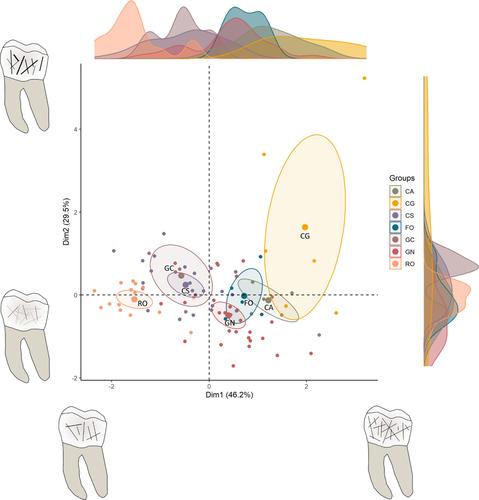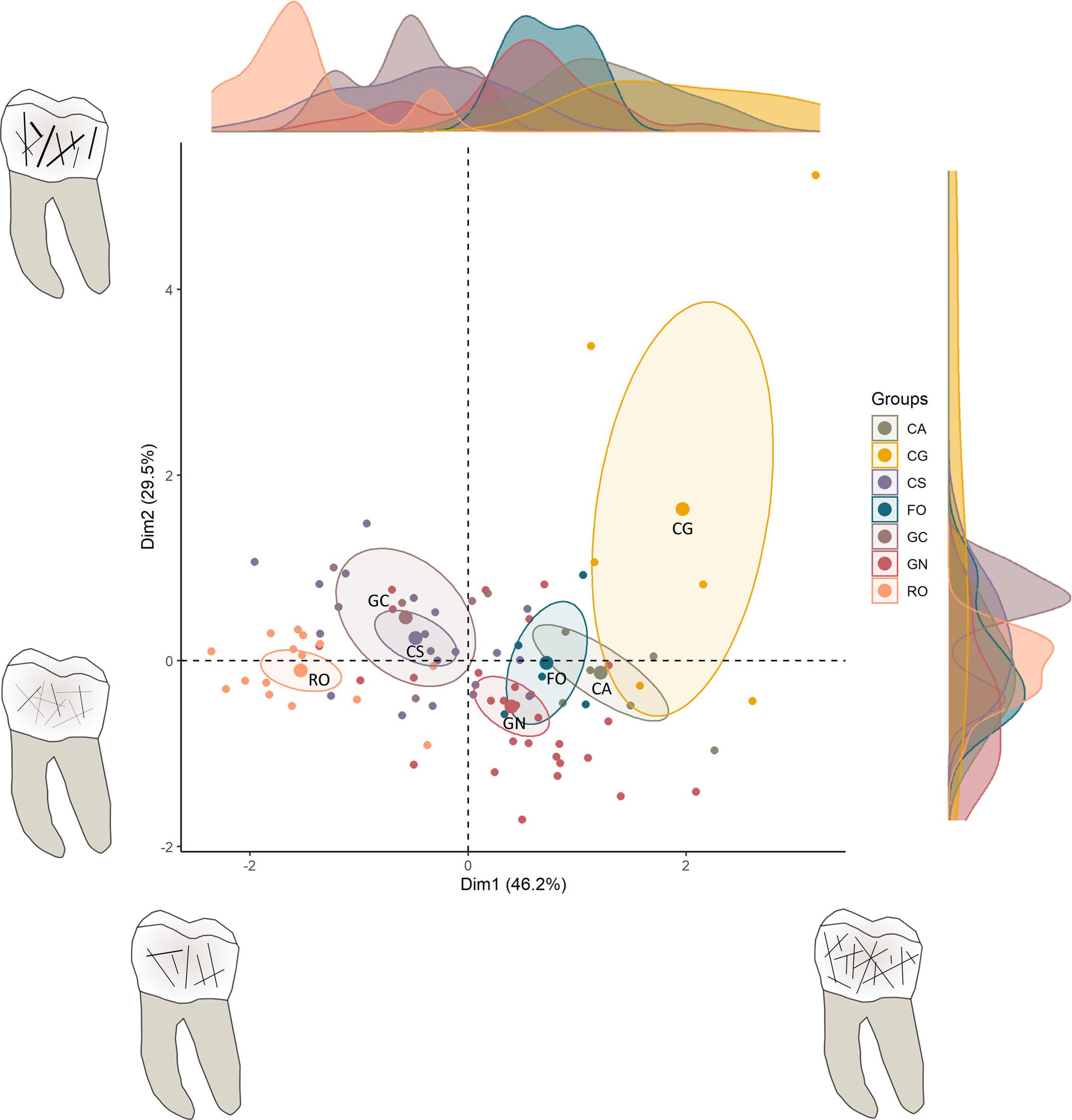Eating through time: Understanding dietary practices across late prehistory in the northeastern Iberian Peninsula
Abstract
Objective
This study seeks to contribute to the current understanding of dietary variation in the late Prehistory of the northeastern Iberian Peninsula by examining buccal dental microwear patterns alongside archeological data from the same populations.
Materials and Methods
Teeth from 84 adult individuals from eight distinct samples spanning the Middle-Late Neolithic to the Middle Bronze Age (Cova de l'Avi, Cova de Can Sadurní, Cova de la Guineu, Cova Foradada, Cova del Trader, Roc de les Orenetes, Cova del Gegant, Cova dels Galls Carboners) were analyzed using optical microscopy to examine buccal dental microwear patterns.
Results
The analysis did not reveal clear chronological contrasts in the dietary habits of these samples. Nevertheless, significant differences emerged among the samples, leading to their classification into two distinct sets based on the abrasiveness of the diet informed by the microwear patterns. These findings offer similarities and differences among samples in the Iberian Peninsula, shedding light on the diverse lifestyles of these individuals.
Discussion
Integrating our new results with other available proxies points to a multifaceted specialization in dietary patterns among these samples, influenced by factors such as habitat, resource selection, and available technology. By contextualizing the results within the broader context of the Iberian Peninsula, this research discerns shared characteristics and distinctive adaptations in the dietary practices and subsistence strategies of these groups. Ultimately, this study contributes to a deeper understanding of the intricate interplay between culture and environment in shaping human diets throughout late Prehistory.



 求助内容:
求助内容: 应助结果提醒方式:
应助结果提醒方式:


